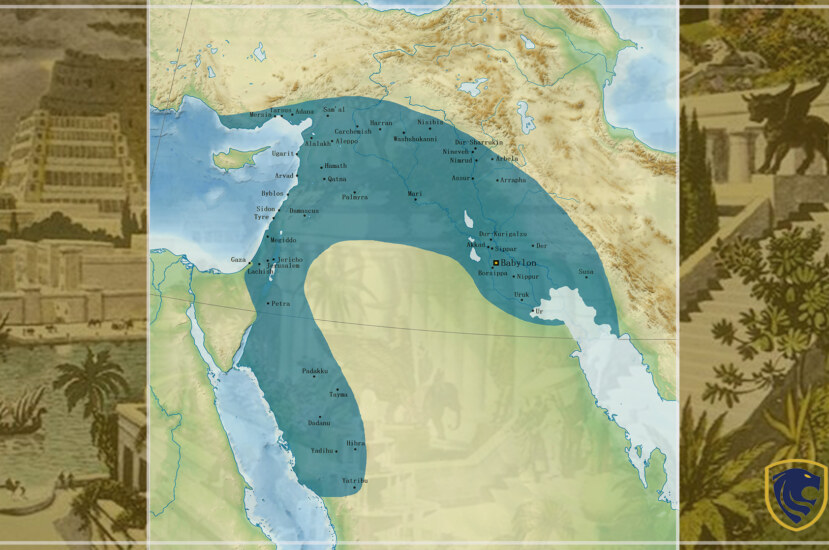There are many theories currently circulating to explain the collapse of Babylonian civilization and Babylonian history. One way to explore these theories is by looking at what the archaeological evidence suggests happened. The ancient Babylonian civilization fell into decline for a variety of reasons, but the two most important were a lack of technology and money. The Inanna’s Descent myth is also thought to have had an important role in the downfall of Babylonia around 539 BCE.
With less than half the population they had in 539 BCE, Babylonians started to move south and east, looking for more fertile land to grow crops on. This weakened their economy and their military capabilities. With their cash sources drying up, they managed to raise enough funds only by looting temples during raids. That created lasting resentment among priests, who then began withholding treasures from temples, further impoverished the city-state.
A second reason for the decline was a lack of technology. The Babylonians never managed to develop a strong economy. They were unable to produce enough food to feed the population, nor could they develop and maintain good roads. These factors undermined trade which was the most important part of their economy. This led to smaller amounts of taxes coming in from trade, which put more pressure on the city-state’s government.
The final cause for Babylon’s decline was religious differences between the people and their rulers and a conflict in what god was most important. This also weakened their economy. The exact date of Babylon’s collapse is unknown, but it was around 539 BCE.
Archaeology
According to some theories, the Babylonians were not destroyed by invaders but by nature. The land rose and covered the city-state so that eventually, nothing remained except a small pit in which a few hundred people had managed to survive until they finally perished from hunger or thirst as they dug through the mound of dirt to find something edible. After this destruction, people living on dry river beds started digging through the soil in search of food and water.

Babylonian history; hanging gardens
They discovered written records and artifacts. The writing on the clay tablet was first called cuneiform script because it was used to carve wooden records. It later became known as a Babylonian script since the city-state people were the first to use this writing style. This writing style is still used today in central Iraq. Researchers found inscriptions written in a cuneiform script dating back to 1900 BC, which marks the beginning of written history for this region of the world.
The Bronze Age Collapse
The first theory is that Babylonian civilization declined as a result of a worldwide disaster known as the Bronze Age Collapse. This collapse occurred around 539 BCE when there was an abrupt decline in bronze production throughout Europe and Asia Minor. Without the use of bronze, civilization began to decline as advanced metallurgy was socially marginalized.
The Umayyad Conquest
The Umayyads, a Muslim dynasty, created a strong central government. However, the Ummayads were not content with their authority over the people and attempted a takeover of power. This resulted in their demise, and Babylon fell into disarray for two hundred years until it was vulnerable to Greek invasion in 539 BCE.
The Loss of Domestic Trade
The loss of trade and prosperity caused many inhabitants to leave Babylon for more fertile lands to cultivate crops such as oil and wheat. Without a strong government, trade was restricted, and many left the land, moving to areas such as the Nile. This caused trade to suffer, and Babylon collapsed into disarray.
Poor Drainage
Rainfall in Babylon was abundant and often led to flooding in the city, destroying homes and crops. This eventually led to famine and rioting amongst its citizens.
Natural Disasters
A series of natural disasters, including earthquakes, famines, droughts, floods, and disease, struck around 539 BCE, causing widespread famine amongst its people.

Babylonian history; ruins of Babylonian civilization
Population Growth
Babylon had reached a point of population explosion, which hampered attempts by King Hammurabi to establish a strong government system that could support its citizens.
Contraction of Trade
The Babylonian Empire suffered from a decrease in the trade as the Medes, Persians, and Macedonians took control of the main roads. Only minimal trade was possible along these routes, so Babylon lost its position as an important trading power.
Unrest Among the Military
The Babylonian military had become disorganized due to poor leadership by King Hammurabi. This caused much discontent amongst those who served in it and led to an uprising among the troops.
Bad government policy
King Hammurabi’s poor policy decisions at times led to massive dissent amongst his people. Over time, this led to internal problems, eventually leading to the collapse of Babylonian civilization.

Babylonian history; ruins of Babylonian civilization
What other factors contributed to Babylon’s decline?
One was probably internal instability. The empire was divided into provinces that had often been conquered by force or originally autonomous city-states or small kingdoms. These divisions were a weakness that invaders could take advantage of to destabilize and eventually conquer the empire.
Another factor was an invasion. As the Akkadian empire lost control over its far-flung provinces, it also lost its ability to defend itself from external aggression. Rulers of neighboring regions such as Elam and Gutium attacked the Akkadian heartland at will, bringing in new populations with different traditions and religions. These people would have a decisive impact on Mesopotamian history for centuries to come.
What is the legacy of Babylonian civilization?
The Babylonian culture left a lasting impact on the world. Its development of writing, mathematics, and astronomy, as well as its art, inspired later the Mediterranean and Near Eastern civilizations that built upon its achievements. The transition from Akkad to Babylon was significant for Mesopotamian history and helped in the development of civilization in the region.
But we also must ask what lessons we should draw from this event? Today, global politics faces a similar promise and risk of political fragmentation. Many commentators have suggested that nation-states are becoming increasingly unstable and vulnerable to domestic and international challenges.
The collapse of the Old Babylonian Empire has provided a lesson for globalization’s future and the world order’s political architecture. The study of Babylonian civilization has demonstrated that political fragmentation may not be inevitable. But it can lead to a decline in power and prosperity for entire regions. It would be ironic if today’s globalization led to more political fragmentation, even as we realize that it led to more liberty and prosperity for entire regions in ancient times.




